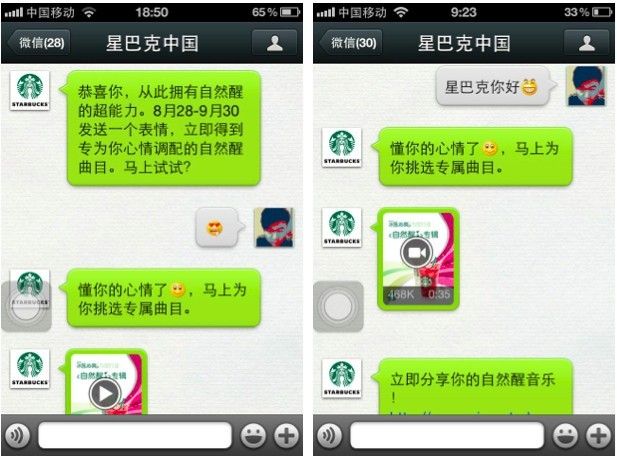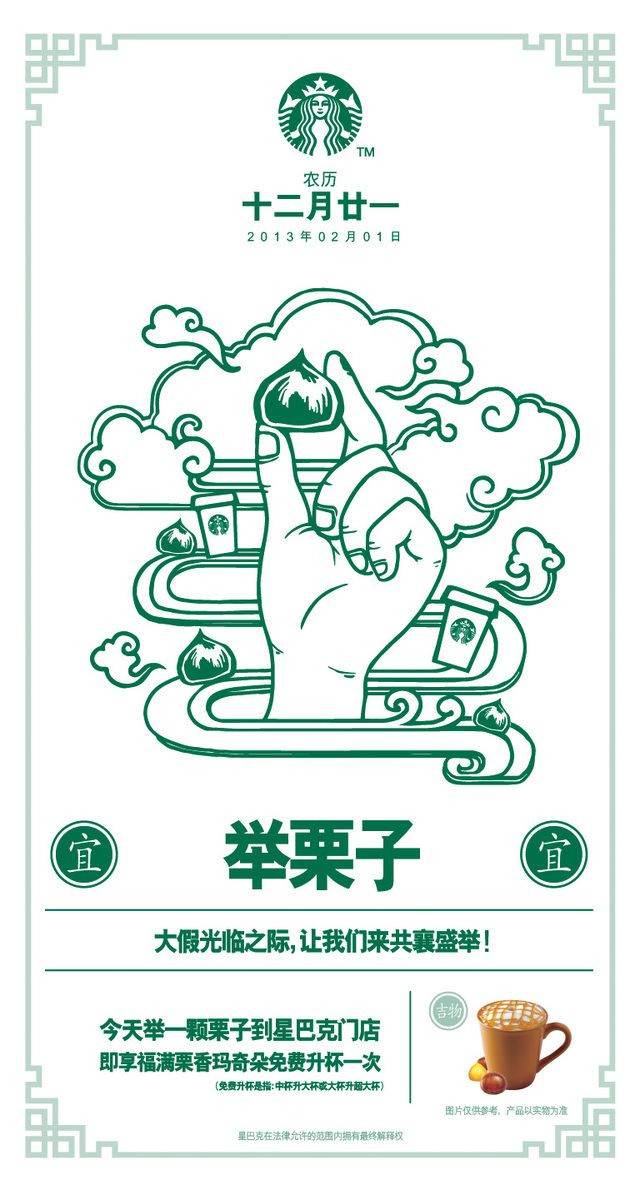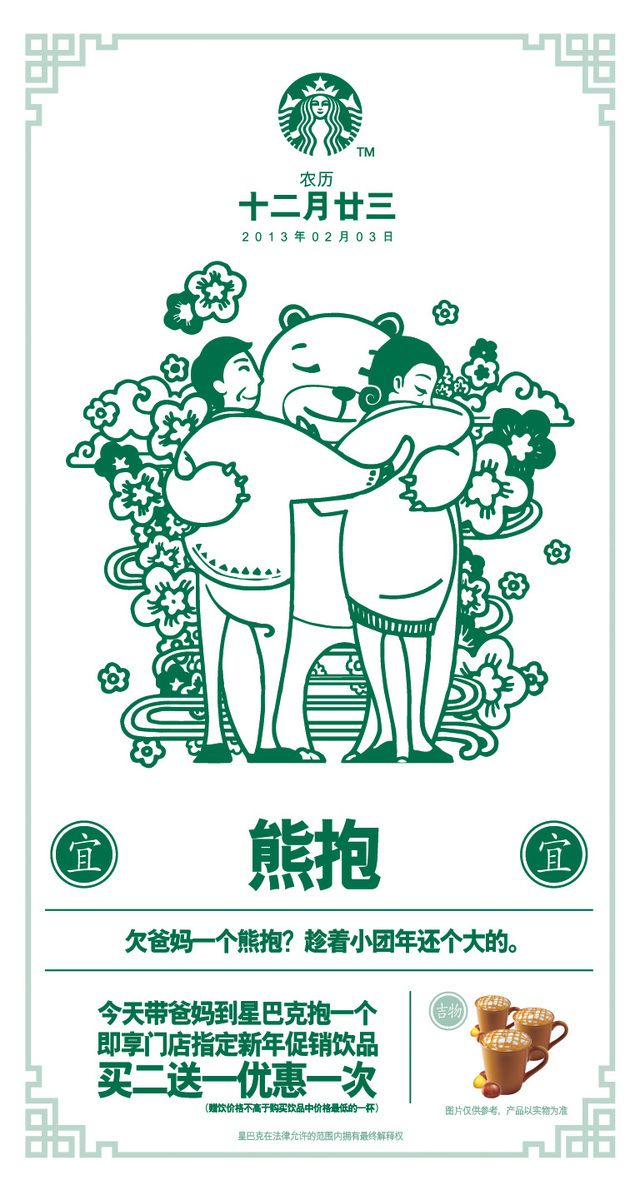Case Study: How One Brand Rocked WeChat To Engage With Mobile Users
This post will be the first in a future series of weekly posts featured specifically on using Chinese social media channels for brands. Today’s focus is on Starbucks and its campaign on WeChat, a popular messaging platform.
THE DISSEMINATION FEATURES OF WECHAT
Compared to Weibo, the media of WeChat is relatively weaker for a number of reasons. First, WeChat is limited not only by the content that can be pushed out within a day but also by their reaching audience. It is possible for Weibo to gain significant influence within a short period of time, countered by the sheer amount of overwhelming information and short-lived hot topics.
For enterprise accounts, that means that a mistake will not cost a high price. But on WeChat in comparison, the point-to-point interaction pattern enables users to stop following accounts immediately if they feel hassled by excessive unwanted messages.
Moreover, given the cap on the number of accounts that WeChat users can follow, they will likely choose only those accounts that can offer enticing, strong content. Accordingly, enterprise accounts will need to be aware about their quality of content – including text, picture, video, or voice – and the frequency of pushing out messages without annoying followers.
HOW TO PUSH BRAND PROMOTIONS ON WECHAT
As WeChat is a closed social networking platform, the speed of information dissemination and the coverage does not equal that of Weibo, with its open and we-media platform. However, WeChat still offers advantages in branding due to mobile-based attributes and its real-life users, who are bound to the service with real phone numbers. Among the most effective WeChat branding case examples that have been influential on brands is the official Starbucks account. Let’s take a look.
STARBUCK’S THREE STEPS TO OPTIMIZING WECHAT
Starbucks’s first round of activity took place from 28 August to 30 September. A user can send an emoticon to Starbucks, who will in return send a track of an album according to the emoticon. By the close of the campaign, Starbucks had tallied 62,000 fans on WeChat and received an average of 22,000 messages per day, with the bulk of the interaction driven by the emoticons.

In its second round of campaigning, Starbucks launched a “morning call” app to promote its newest series of breakfast products. Users can download Starbucks’ app and set the wake-up alarm for 9:00am at the latest – just enough time for breakfast. If users make it into any Starbucks stores within one hour after the alarm setting, then they can enjoy the new breakfast products at half price, along with a purchase of any regular-priced coffee.

The third round of campaign activity, aligned with Chinese New Year, spotlighted a product promotion: the Starbucks Calendar. These daily activities were creative and interactive, including directions like raising a chestnut (in recognition of the new chestnut-flavored coffee) for a free coffee or bear-hugging parents at Starbucks to receive a buy-one-get-one promotion.


IN SUMMARY
These are the main takeaway points from Starbucks’ WeChat campaign:
- It is difficult to form a rapid and extensive broadcasting path through point-to-point interaction pattern on WeChat. New or less known brand is not suitable for a large-scale promotion.
- Service-oriented brands such as food and beverage, hotels, and commercial centers are more suited for using WeChat promotions as O2O (offline-to-offline).
- WeChat’s point-to-point communication (text, voice, picture, and video) establishes it as a strong customer service platform.
- While new promotion and offers can be sent to followers via WeChat, brands should nonetheless pay attention to the quality of content, push frequency, and time slot to ensure that users stay interested.
Continue reading here: QR Codes: Interactive Bridge Between Real and Virtual Worlds
Was this article helpful?

